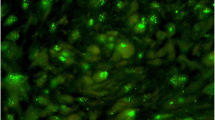Abstract
Background
This study defines the behavior and classification of atypical lipomatous tumors (ALT) and well-differentiated liposarcomas (WDLS) of the extremity and trunk.
Methods
A total of 91 well-differentiated lipomatous tumors of the extremity and trunk were identified from a soft tissue tumor database between July 1982 and June 2001. A soft tissue pathologist, blinded to prior diagnosis and clinical outcome, reviewed histology. Those composed predominantly of mature adipose tissue with scattered atypical stromal cells and scant lipoblasts or fibrosis were ALTs. Tumors with lipoblast but <25% fibrosis were termed lipoma-like WDLS, and those with >-25% fibrosis were identified as sclerosing WDLS. Clinical factors were analyzed to assess effects on local recurrence-free survival (LRFS).
Results
Histological review identified 34 ALTs and 57 WDLSs. Of the WDLSs, 29 were lipoma-like and 28 were sclerosing. Five-year and 10-year LRFS were 100%±0% and 78%±9%, respectively. Factors evaluated were age, sex, tumor site, tumor size, histology, presentation status, margin status, and adjuvant radiotherapy. Positive resection margins and sclerosing histology were associated with reduced LRFS. Dedifferentiation was observed in three tumors (3%)
Conclusions
Lipoma-like WDLSs and ALTs share similar histological features and favorable behavior. Margin-positive sclerosing WDLSs have a 10-year LRFS of only 17% and should undergo function-preserving re-excision when possible, or adjuvant radiotherapy.
Similar content being viewed by others
References
Brennan MF.Diagnosis and Management of Soft Tissue Sarcoma. London: Martin Dunitz, 2002:21–54.
Kindblom LG, Angervall L, Fassina AS. Atypical lipoma.APMIS 1982;90:27–36.
Evans HL, Soule EH, Winkelmann RK. Atypical lipoma, atypical intramuscular lipoma, and well-differentiated retroperitoneal liposarcoma: a reappraisal of 30 cases formerly classified as well-differentiated liposarcoma.Cancer 1979;43:574–84.
Rozental TD, Khoury LD, Donthineni-Rao R, Lackman RD. Atypical lipomatous masses of the extremities: outcome of surgical treatment.Clin Orthop 2002;203–11.
Weiss SW, Rao VK. Well-differentiated liposarcoma (atypical lipoma) of deep soft tissue of the extremities, retroperitoneum, and miscellaneous sites. A follow-up study of 92 cases with analysis of the incidence of “dedifferentiation”.Am J Surg Pathol 1992;16: 1051–8.
Azumi N, Curtis J, Kempson RL, Hendrickson MR. Atypical and malignant neoplasms showing lipomatous differentiation. A study of 111 cases.Am J Surg Pathol 1987;11:161–83.
Lucas DR, Nascimento AG, Sanjay BK, Rock MG. Well-differentiated liposarcoma. The Mayo Clinic experience with 58 cases.Am J Clin Pathol 1994;102:677–83.
Henricks WH, Chu YC, Goldblum JR, Weiss SW. Dedifferentiated liposarcoma: a clinicopathological analysis of 155 cases with a proposal for an expanded definition of dedifferentiation.Am J Surg Pathol 1997;21:271–81.
Mentzel T. Biological continuum of benign, atypical, and malignant mesenchymal neoplasms—does it exist?J Pathol 2000;190:523–5.
Enzinger F, Wolf RF. Liposarcoma. A study of 103 cases.Virchows Arch A Pathol Anal Histol 1962;335:367–88.
Kindblom LG, Angervall L, Stener B, Wickbom I. Intermuscular and intramuscular lipomas and hibernomas. A clinical, roentgenologic, histologic, and prognostic study of 46 cases.Cancer 1974; 33:754–62.
Fletcher CD, Akerman M, Dal Cin P, et al. Correlation between clinicopathological features and karyotype in lipomatous tumors. A report of 178 cases from the Chromosomes and Morphology (CHAMP) Collaborative Study Group.Am J Pathol 1996;148: 623–30.
Rubin BP, Fletcher CD. The cytogenetics of lipomatous tumours.Histopathology 1997;30:507–11.
Fletcher CDM, Unni KK, Mertens F, eds.Pathology and Genetics of Tumors of Soft Tissue and Bone. Oxford: Oxford University Press, 2002;35–9.
Weiss SW. Lipomatous tumors.Monogr Pathol 1996;38:207–39.
Mentzel T, Fletcher CD. Lipomatous tumours of soft tissues: an update.Virchows Arch 1995;427:353–63.
Kaplan TL, Meier S. Nonparametric estimation from incomplete observations.J Am Stat Assoc 1958;53:457–81.
Peto R, Peto J. Asymptomatically efficient rank invariant test procedures.J R Stat Soc A 1972;135:185–206.
Enzinger F, Weiss SW.Soft Tissue Tumors. St. Louis: Mosby 1988:346–82.
Author information
Authors and Affiliations
Corresponding author
Rights and permissions
About this article
Cite this article
Kooby, D.A., Antonescu, C.R., Brennan, M.F. et al. Atypical lipomatous tumor/well-differentiated liposarcoma of the extremity and trunk wall: Importance of histological subtype with treatment recommendations. Annals of Surgical Oncology 11, 78–84 (2004). https://doi.org/10.1007/BF02524350
Received:
Accepted:
Issue Date:
DOI: https://doi.org/10.1007/BF02524350




